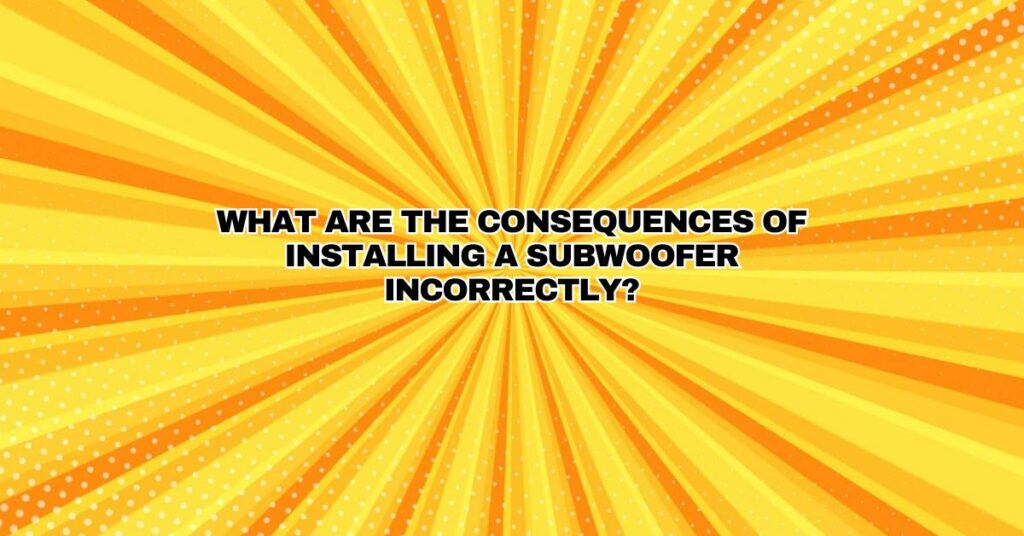Installing a subwoofer incorrectly can have significant consequences, impacting both your audio system’s performance and the subwoofer’s longevity. In this comprehensive guide, we’ll explore the potential ramifications of improper subwoofer installation and provide insights on what to avoid.
1. Distorted Sound Quality
a. Overloading the Subwoofer:
Incorrectly configuring your subwoofer, particularly in terms of power, can lead to overloading. This causes the subwoofer to produce distorted and unpleasant sound. Overloading can also damage the subwoofer’s internal components.
2. Suboptimal Bass Response
a. Poor Placement:
Placing the subwoofer in the wrong location can result in suboptimal bass response. For example, positioning it in a corner may create “boomy” bass, while placing it too close to a wall can lead to uneven bass distribution. Finding the right placement is critical for balanced and powerful bass.
3. Damage to the Subwoofer
a. Overpowering:
One of the most common mistakes is overpowering the subwoofer. Connecting it to an amplifier that delivers more power than the subwoofer can handle can cause overheating, mechanical stress, and damage to the voice coil. It’s crucial to match the subwoofer’s power-handling capabilities with the amplifier’s output.
b. Ignoring RMS Ratings:
Neglecting the subwoofer’s RMS (root mean square) rating can lead to damage over time. RMS ratings represent the subwoofer’s continuous power-handling capability. Operating it consistently above this rating can cause long-term damage.
4. Uneven Bass Distribution
a. Misalignment:
Failing to align the subwoofer properly with your main speakers or the listening area can result in uneven bass distribution. This can lead to “dead spots” or areas with excessively strong or weak bass. Alignment is essential for achieving balanced sound.
b. Neglecting Crossover Settings:
Incorrectly configuring crossover settings can cause the subwoofer to reproduce frequencies that should be handled by the main speakers, or vice versa. This can result in a lack of integration between the subwoofer and the main speakers, leading to uneven bass.
5. Physical Damage
a. Mishandling:
Rough handling or mishandling during installation or relocation can cause physical damage to the subwoofer. Dropping or subjecting it to physical shocks can harm the internal components.
6. Inadequate Calibration and Settings
a. Lack of Calibration:
Failing to calibrate your subwoofer and adjust its settings can result in suboptimal performance. Modern subwoofers often have features for room calibration, which adapt audio output to the room’s acoustics. Proper calibration is crucial for optimal performance.
7. Risk of Electrical Issues
a. Overloading Circuits:
Incorrectly connecting your subwoofer to an electrical outlet with an inadequate power rating can lead to circuit overloads. This can result in electrical issues and potential damage.
8. Compromised Longevity
a. Neglecting Maintenance:
Neglecting regular maintenance, such as cleaning the subwoofer and keeping it free from dust and debris, can compromise its longevity. Dust and debris can affect the driver and may lead to overheating.
Conclusion
Installing a subwoofer correctly is essential for optimal audio performance and the longevity of your equipment. The consequences of incorrect installation include distorted sound, suboptimal bass response, subwoofer damage, uneven bass distribution, physical damage, electrical issues, and compromised longevity. To avoid these ramifications, carefully follow installation instructions, calibrate your subwoofer, and handle it with care. By doing so, you can enjoy the full benefits of your subwoofer and protect your investment in high-quality audio.


